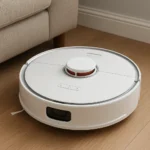Are you worried about your middle schooler’s knee pain? Could it be growth pains or something else? Explore the causes, treatments like injections, and the difference between growth pains and other knee issues.
Knee pain is a common concern among middle school students, often caused by growth-related factors or physical activity. As children transition through their teenage years, their bodies undergo rapid changes that can result in various aches and pains. Knee pain, in particular, is not uncommon, but it can raise concerns for both students and their parents. Is it simply growing pains, or is it something more serious? In this article, we will explore common causes of knee pain in middle school students, including growth pains, the role of injections in treatment, and more.
Middle School Student Knee Pain: Growth Pain
Knee pain in middle school students is often attributed to a condition known as “growth pain” or “Osgood-Schlatter disease.” This occurs when the growth plate in the tibia (shin bone) becomes inflamed due to the force exerted by growing muscles and tendons. During periods of rapid growth, which typically occur between ages 10 and 14, the body’s bones grow faster than muscles and tendons, leading to tension around the knee joint.
The Role of Rapid Growth
During adolescence, the body undergoes significant physical changes. The bones, muscles, and tendons grow at different rates, which can lead to discomfort, especially in the knees. The knee joint is particularly vulnerable as the quadriceps (thigh muscles) exert force on the patellar tendon. In many cases, the stress placed on the knee can cause inflammation and discomfort, especially during physical activities like running, jumping, or sports.
Symptoms of Growth Pain
For students experiencing growth pain, the symptoms typically include:
-
Pain below the knee cap Often on the front of the knee, near the area where the tendon connects to the shin bone.
-
Swelling In some cases, swelling may occur at the site of pain.
-
Pain during physical activity The pain may increase during sports or running but generally eases with rest.
It’s important to note that growth pain, while common, tends to resolve over time as the bones stop growing and the tendons catch up.
Treatment for Growth Pain
For middle school students experiencing growth pain, rest and activity modification are essential. Over-the-counter pain relievers can help manage discomfort, and applying ice to the knee after activity can reduce swelling. Stretching and strengthening exercises may also be beneficial, but students should consult with a healthcare professional before beginning any exercise routine. If the pain persists, it’s important to visit a doctor to rule out other causes and receive proper treatment.
👉 Learn More About Growth Pain in Students 👈
Middle School Student Knee Pain: Injections and Other Treatments
While growth pain often resolves with time, some middle school students may experience persistent knee pain that requires more intensive treatment. In cases where other treatments have been unsuccessful, injections can be considered. These injections are often used to manage inflammation and pain when other options, such as physical therapy or medications, have not provided relief.
Corticosteroid Injections
One of the most common types of injections used for knee pain in middle school students is corticosteroid injections. These are powerful anti-inflammatory medications that can provide relief from pain and swelling. They are usually administered directly into the knee joint and can offer long-lasting relief, particularly for conditions like tendinitis or bursitis, which may occur in active adolescents.
However, corticosteroid injections should be used with caution in growing children, as repeated use can have side effects, including potential damage to the growth plates. Therefore, they are typically reserved for cases where other treatments have failed.
Hyaluronic Acid Injections
Another option for knee pain relief is hyaluronic acid injections. These injections provide lubrication to the knee joint, improving its movement and reducing friction. While this treatment is more commonly used in adults with osteoarthritis, some doctors may use it for children who experience chronic knee pain due to joint instability or other conditions.
When to Consider Injections
Injections are typically considered for middle school students only when the pain is severe and does not improve with basic treatments like rest, physical therapy, and over-the-counter medications. It’s crucial that parents consult with a pediatric orthopedic specialist to determine whether injections are appropriate for their child.
👉 More Information on Injections for Knee Pain 👈
Middle School Student Knee Pain: Causes and Other Factors
Knee pain in middle school students can be caused by a variety of factors beyond just growth pain and inflammation. Some common causes include overuse injuries, improper footwear, and alignment issues.
Overuse and Physical Activity
Middle school students who are active in sports or physical activities are at an increased risk of knee pain. Overuse injuries occur when a student performs repetitive motions, such as running or jumping, without giving the body enough time to rest. These types of injuries can lead to conditions like patellar tendinitis or bursitis, which can cause pain around the knee joint.
Poor Footwear
Wearing shoes that do not provide adequate support can contribute to knee pain. Shoes with inadequate cushioning or improper arch support can lead to improper knee alignment, putting extra stress on the joint. Ensuring that a student wears appropriate footwear for their activity is a simple but effective way to prevent knee pain.
Misalignment and Posture
Sometimes knee pain in middle school students can be linked to misalignment of the lower body. Conditions like flat feet or issues with the alignment of the hips, knees, or ankles can place additional strain on the knee joint, leading to discomfort and pain. Regular check-ups with a healthcare provider can help identify and address these alignment issues early on.
👉 Discover More Causes of Knee Pain in Students 👈
Conclusion
Middle school student knee pain can arise from various causes, including growth pains, overuse, and misalignment. While growth pain is a common cause of discomfort, it is essential for parents and caregivers to pay attention to the severity and duration of the pain. In some cases, injections may be necessary to manage persistent pain, but these should be considered as a last resort after other treatments have been explored. With proper management, most middle school students will experience relief from knee pain, enabling them to return to their activities without discomfort. Remember to consult with a healthcare professional to determine the best course of action for your child’s specific needs.






